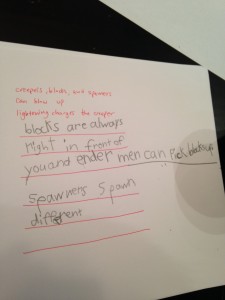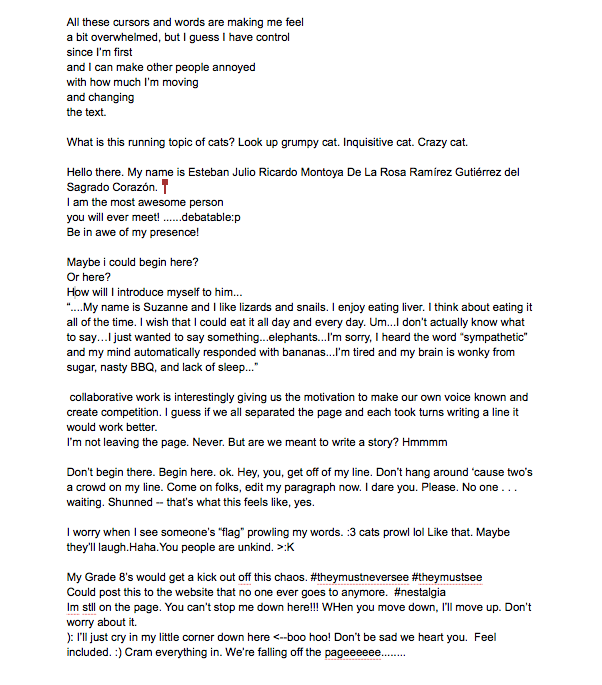With an article devoted to “addressing persuasive visual messages” (Farmer 33), and which opens with the line that “if a picture is worth a thousand words, then a few images can constitute a persuasive argument” (Farmer 30), I found myself taking a closer look at the image presented at the beginning of the article, and generally paying more attention to the visual layout of the article, in an attempt to analyze it in the same ways that it suggests that teachers should train students to analyze advertizing and other media. The article suggests that what makes an image persuasive is “content, context, and connotation”, so with that in mind, I delved deeper into the article’s visual presence.
The initial image content is of a young woman in a blue shirt, with crossed arms and a skeptical expression on her face. At first glance, we might take the contextual meaning that she is a visual model for the championed stance of skepticism and critical thinking. Looking deeper at context and connotation, and applying some of the analysis techniques recommended by the article, such as considering “who created the message”, “why was the message created”, and “what values, lifestyles, and points of view are represented or omitted” (Farmer 32), I took time to think about why the image was included, why that image was specifically chosen, how it influenced me, and whose values and intentions were being communicated. I was certainly struck by the use of colour, as my second look prompted me to realize that the young woman’s shirt was the same cool azure as some of the accent text, bullet point markers, and dividers between sections. I questioned the effect of the colour scheme, and also questioned whether the young woman’s photo was changed to make her shirt match the scheme, or whether the colour scheme was matched to her actual shirt colour as photographed. The colour scheme of azure, rust red, white, and a much paler azure used in some of the charts, not only granted a coherence and cohesiveness granted by the continuity of the colour scheme, but it also had aesthetic and emotional effects. It is a non-threatening and visually appealing colour scheme, which created an emotional feeling of calm, stability, and authority, that I feel encouraged me to take on a trusting demeanor. The colour scheme connotated an environment of comfort and trust, and helped convince me of the textual argument. Taking a cultural perspective and trying to further understand their “visual coding system” (Farmer 31), I also suspect that as this article was produced in the United States of America that there may have been a subtle connection to their flag, whether it was a conscious or unconscious decision, and that the basic red-white-blue colour scheme would be likely to evoke an American’s patriotic sensibilities and cause them to feel an ethical responsibility to their students and by extension, a responsibility to the wellbeing of the country as a whole, in an endless feedback loop.
These visuals were subtle, yet had a powerful impact of the article’s effectiveness. My own education in visual literacy, possibly augmented by the approaches recommended by this article, have equipped me to unpack the article at both textual and visual levels, and to better understand the meaning being communicated. These skills assist me in assessing visual and textual messages every day, and while I am able to recognize the techniques being used to persuade me in this article, I am the one who has carefully weighed and considered, and decided that the argument has merit, rather than being passively led to agree with Farmer’s conclusions.
Question to Consider:
Visual literacy extends beyond the critical analysis of illustrative or photographic image, and includes all of the visuals included in a given product: the colours, shapes, fonts, and layout. What conventions of this layer of communication do you consciously understand and interpret, and how much of it is interpreted on a subconscious level?
References
Farmer, Lesley S.J. (2007). I See, I Do: Persuasive Messages and Visual Literacy. Internet @ schools, 14(4), p. 30-33.
By Amanda Cameron




